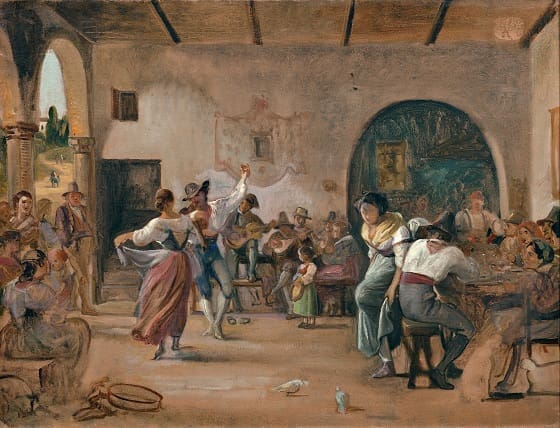Wilhelm Marstrand
Dance in an Osteria, c. 1860
Oil on card, 45 x 59 cm.
Inventory number: 0115NMK
Acquired in 1873. Bestowed to the museum in 1908
In many of his subjects from his time in Rome, Marstrand focussed on the spectacular and colourful folk life. An Osteria was a public house where people could eat and drink. The folk scenes at the sites were a favoured subject and the Italian dance, the saltarello, greatly fascinated Marstrand. In many of Marstrand’s larger figure compositions from Rome, it is movement, often in the form of dance, which gives life to the painting. The populous composition is dynamic and the image is infused with the fresh lightness of a sketch. The foreground elements are painted with just a few, simple brushstrokes and the paint layer in the rest of the sketch is very thin, but still sufficient to clearly indicate how Marstrand wanted to reproduce colour, light and shadow.
Wilhelm Marstrand (1810-1873)
Marstrand was among C.W. Eckersberg’s students and was, as the only one, very interested in narrative and illustrative painting. Marstrand worked with genre painting, literary subjects, portraiture and, in later years, history painting. He was frequently employed as a portraitist and painted a series of portraits of members of the Hage family, among others. Marstrand travelled throughout his life in the larger European countries such as Italy, France, Germany and England. He was particularly fascinated by Italy, where he stayed for several years. From here, he became a major producer of peculiar, touching, and often humorous or ironic depictions of the Italian folk life that so fascinated him.


